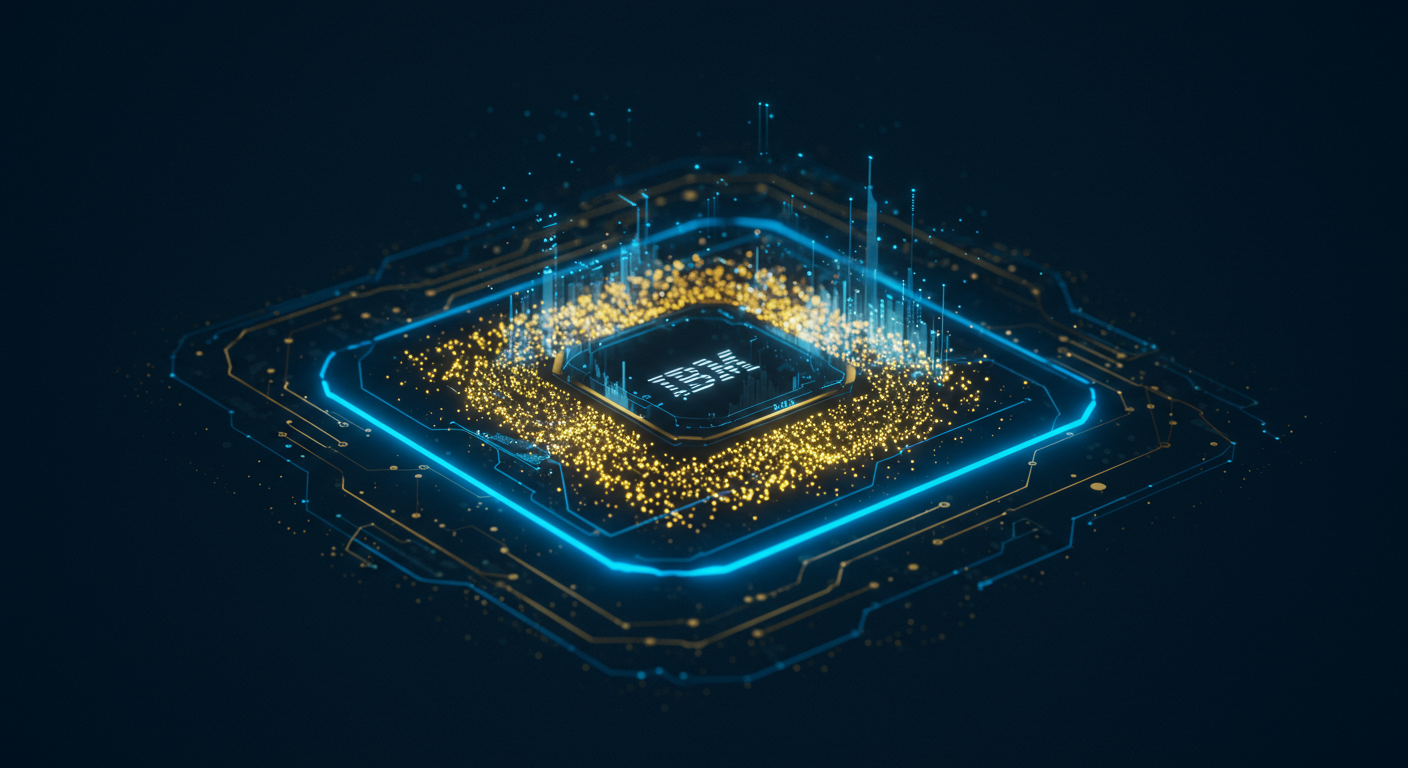Project Bob: IBM's AI-Powered IDE and the Future of Developer Productivity

It's high time our IDEs started pulling their weight, and IBM's Project Bob might just be the tool to make that happen.
Introduction: The Promise of Project Bob
Project Bob is IBM's foray into the world of AI-powered IDEs, aiming to revolutionize how developers work by deeply integrating AI into the coding process. This IDE is designed to help users to perform a wide range of tasks, from code completion to bug detection.Developer Productivity Boost: Fact or Fiction?
IBM boldly claims that Project Bob can increase developer productivity by up to 45%. If true, this could dramatically alter the software development landscape. Think about it:- Faster development cycles mean quicker time-to-market.
- Reduced debugging time allows developers to focus on innovation.
- Lower project costs due to increased efficiency.
Why the "Multi-Model" Approach Matters
Project Bob's multi-model IDE architecture is key to its potential. Rather than relying on a single, monolithic AI, it intelligently combines multiple AI models to address various coding challenges.This approach allows the IDE to leverage the strengths of each model, resulting in more accurate and relevant assistance. If you're interested in learning more about AI's impact, check out our Guide to Finding the Best AI Tool Directory
The AI-Driven Future is Now
The increasing role of AI in coding is undeniable, and Project Bob is a prime example of this trend. The seamless integration of Large Language Models (LLMs) and other AI technologies promises to fundamentally reshape developer workflows, making them more efficient and less prone to errors.This AI IDE has the potential to save developers time and money, making it a tool well worth considering for businesses and individuals.
Project Bob promises to rewrite the rules of software development, leveraging AI to boost developer productivity in ways we've only dreamed of. But how does it actually work?
Decoding Project Bob: Architecture and Key Features
Project Bob isn't just another fancy code completion tool; it's an AI-powered IDE designed to understand and assist with every stage of the software development lifecycle, from initial planning to debugging.
LLM Orchestration at the Core
At its heart, Project Bob uses sophisticated LLM (Large Language Model) orchestration. It's not just about plugging in a single model; it's about intelligently managing multiple models to achieve specific tasks.- Different LLMs are chosen based on the task at hand, ensuring optimal performance and efficiency.
- Think of it like a conductor leading an orchestra, ensuring each instrument (LLM) plays its part perfectly.
Context is King: The "Full Repository Context" Feature
"Code doesn't exist in a vacuum,"
This feature gives Project Bob a deep understanding of the entire codebase, not just the immediate file being edited. This holistic view allows for more accurate code completion, bug detection, and code generation. For example, Project Bob can suggest code snippets that are consistent with the project's overall architecture and coding style.
A Multi-Model Approach for Success

- Code Generation: One model might specialize in generating boilerplate code, freeing developers from repetitive tasks. See how similar Code Assistance tools help.
- Bug Detection: Another model could focus on identifying potential security vulnerabilities or performance bottlenecks.
- IBM Watson Integration: Project Bob seamlessly integrates with existing IBM Watson Studio tools, giving developers access to a wealth of AI capabilities. It can utilize other IBM tools for testing and deployment.
IBM claims Project Bob can boost developer productivity by 45%, but let's dive into what that actually means.
What Metrics Were Used?
IBM likely measured productivity through a combination of metrics. These probably include:
Lines of Code Written: A traditional, though imperfect, metric. More code isn't always better* code.
- Time to Completion: How quickly developers finished specific coding tasks.
- Bug Density: The number of bugs per line of code, indicating code quality.
- Task Completion Rate: Did developers finish the assigned task successfully?
Potential Limitations and Biases
It's vital to view this claim with a critical eye.
Claims of "X percent improvement" should always be viewed skeptically. What was the control group? What were the tasks? The devil, as always, is in the details.
Were the test tasks representative of real-world coding scenarios? Were the developers using Project Bob already familiar with AI-assisted coding? Could a Hawthorne effect (improved performance simply due to being observed) have influenced the results? Keep in mind also that some developers may need some code assistance with boilerplate code, but may perform worse with some AI tools.
Comparisons and User Experiences
How does this 45% figure stack up against other AI-assisted coding tools like GitHub Copilot or Tabnine? Unfortunately, direct comparisons are difficult due to varying methodologies. User testimonials, when available, often provide anecdotal evidence. Have developers using Software Developer Tools experienced significant, noticeable improvements in their workflow?
Ultimately, the true measure of Project Bob's effectiveness lies in its real-world impact on developer efficiency gains. While a 45% productivity boost is a compelling claim, a deeper understanding of the methodology and potential biases is essential. We'll continue digging to bring you more insights.
Here's the truth: AI coding assistants are rapidly transforming the software development landscape.
Project Bob vs. the Competition: A Comparative Analysis
Project Bob faces stiff competition in the AI-powered coding tool arena, so let's see how it stacks up against established players like GitHub Copilot, Tabnine, and Amazon CodeWhisperer. Tabnine is another popular AI code completion tool that supports more than 30 languages, while Amazon CodeWhisperer provides similar features with a focus on AWS services.
Feature Face-Off
| Feature | Project Bob | GitHub Copilot | Tabnine | Amazon CodeWhisperer |
|---|---|---|---|---|
| Code Completion | Excellent | Excellent | Good | Good |
| Code Generation | Strong | Strong | Moderate | Moderate |
| Multi-Model | Yes | Limited | Limited | Limited |
| Repository Context | Yes | Yes | Limited | Limited |
| Supported Lang. | Wide | Wide | Wide | Limited |
| Pricing | Varies | Subscription | Freemium/Paid | Freemium/Paid |
Unique Selling Points: Project Bob's Edge
Project Bob's multi-model approach, drawing from various AI architectures, could give it an edge. The capacity to deeply understand a repository is also a key differentiating factor.
"Leveraging diverse AI models ensures more accurate and context-aware suggestions."
Strengths & Weaknesses by Scenario
- Rapid Prototyping: GitHub Copilot excels
- Legacy Code Maintenance: Project Bob's repository context comes in handy
- Cloud-Native Development: Amazon CodeWhisperer is a natural fit
- Cost-Conscious Projects: Tabnine's freemium version wins
Vendor Lock-In: A Word of Caution
As with any platform, be mindful of vendor lock-in. Weigh the long-term implications before fully committing to any single AI coding tool. Consider using best AI tools that have open-source alternatives.
Ultimately, the choice depends on specific needs and workflows. Evaluate each tool's capabilities in YOUR environment. Don’t just take my word for it, experiment!
Project Bob and the Rise of AI-Assisted Coding: Will it Liberate or Replace Developers?
The line between human and machine blurs further as AI-powered IDEs like Project Bob promise to reshape the very nature of software development.
The Evolving Skill Set
AI is shifting the landscape of required developer skills.
From Code Alchemist to Conductor: Knowing how to code is becoming less critical than knowing what* to code, and how to guide the AI towards that goal.
- Prompt Engineering: Developers will need to become adept at crafting precise prompts to direct AI code generation. Imagine turning ChatGPT into your coding assistant.
- Critical Code Review: With AI generating code, developers must hone their code review skills, ensuring security, efficiency, and maintainability. Learn how code review prompts help in this aspect.
The Workflow Revolution
Coding workflows are about to undergo a seismic shift.
- AI-Powered Autocompletion: Advanced autocompletion takes over, suggesting entire code blocks rather than just snippets.
- Automated Debugging: AI can analyze code for potential errors and suggest fixes in real-time.
- Task Automation: Repetitive tasks like boilerplate code generation and unit test creation are automated, freeing up developers to focus on complex problem-solving.
Job Security and Reskilling
- Job Displacement Concerns: While some fear job displacement, AI is more likely to augment existing roles.
- The Reskilling Imperative: Developers must embrace continuous learning, acquiring skills in AI-assisted development and prompt engineering to stay ahead. Tools for software developers are evolving rapidly.
Project Bob isn't just about streamlining your current workflow; it's about expanding the horizons of what's achievable in software development and beyond.
Beyond Traditional Coding
What if we applied Project Bob's AI smarts beyond the traditional IDE? Think about it:
- Data Science: Imagine using AI to assist in building complex data pipelines or generating Python scripts for data analysis. A tool like Data Analytics AI Tools could help you visualize data patterns and suggest appropriate analytical models.
- AI Model Building: Streamlining the creation of AI models themselves. Instead of manually writing code for neural networks, Project Bob could suggest architectures, optimize hyperparameters, and even generate training datasets. Similar to how GPT-Trainer helps train AI models.
The Future Roadmap
IBM likely has ambitious plans:
- Enhanced code completion and suggestion: Moving beyond basic snippets to suggesting entire architectural patterns or design implementations.
- Integration with other IBM products: Seamless workflows across IBM's cloud platform and software suite.
- Support for more languages and frameworks: Expanding beyond initial offerings to cater to a broader developer base.
- Collaboration Features: Enhanced collaboration capabilities, maybe co-piloting with AI for real-time assistance.
IBM's AI Strategy and Ethical Considerations

IBM's broader AI strategy seems to be centered on responsible AI and enterprise solutions. Project Bob fits this by promising to augment, not replace, developers. Still, ethical considerations are paramount:
- Bias in code: Ensuring training data is diverse and free from bias.
- Job displacement: Mitigating concerns about automation impacting developer roles. The reality is more about augmentation, enabling developers to focus on higher-level tasks, like creative Design AI Tools.
- Transparency: Understanding how the AI arrives at its suggestions.
Project Bob is changing the game for developers, but how do you actually get your hands on this AI-powered IDE?
Accessing Project Bob
Currently, Project Bob is in a limited access preview. The best way to express interest is by visiting the official IBM developer resources page and signing up for updates. Early access programs are often tiered, so the more information you can provide about your use case, the better.
Think of it like applying for a competitive grant – show them you're serious.
Pricing and Subscription Options
Specific Project Bob pricing details are still under wraps, but we can anticipate a few potential models:
- Tiered Subscriptions: Offering different feature sets and usage limits.
- Usage-Based Pricing: Charging based on the number of AI-assisted tasks performed.
- Enterprise Licensing: Tailored solutions for larger organizations.
- Bundled Pricing: Project Bob included as part of a larger IBM Cloud or developer tools package.
Resources and Support
IBM provides comprehensive documentation and support for their developer tools:
- Documentation: Expect extensive documentation covering installation, configuration, and usage.
- Tutorials: Look for beginner-friendly tutorials and advanced deep dives on specific features. A quick search for "Project Bob tutorial" will surface community-created content as well.
- Community Forums: Engage with other developers and IBM experts in dedicated forums.
- IBM Developer: Explore Software Developer Tools
Ready? Go!
Conclusion: Embracing the AI-Powered Future of Software Development
Project Bob's unveiling signifies more than just an improved IDE; it's a glimpse into the AI software development future. By automating tedious tasks, it promises to free developers to focus on the truly creative aspects of coding, accelerating innovation and boosting developer productivity tools.
The Transformative Power of AI in Coding
Project Bob isn't about replacing developers; it's about augmenting them.
Here's what that future looks like:
- Increased Efficiency: AI-powered tools like Project Bob can drastically cut down development time. This Code Assistance is now able to generate boilerplate code and offer real-time suggestions.
- Enhanced Creativity: By handling repetitive tasks, developers can dedicate more time to problem-solving and innovative design.
- Reduced Errors: AI can assist in debugging, code review using tools like Code Review Checklist, and testing, leading to more stable and reliable software.
The Road Ahead
The future of coding is undeniably intertwined with AI. As AI models become more sophisticated, we can expect even greater levels of automation and assistance. Embracing these tools is crucial for staying competitive and pushing the boundaries of what's possible.
Your Next Step
Now is the time to explore AI-powered development tools. Experiment with Project Bob and other resources to discover how they can revolutionize your workflow. The future of coding is here, and it's intelligent.
Keywords
Project Bob, AI-powered IDE, Developer productivity, IBM, LLM orchestration, AI code generation, Software development, Code completion, AI coding tools, IBM Watson, AI developer tools, Multi-model IDE, Code repository context, AI-assisted coding
Hashtags
#AIcoding #DeveloperProductivity #ProjectBob #IBM #AISoftwareDevelopment
Recommended AI tools

Your AI assistant for conversation, research, and productivity—now with apps and advanced voice features.

Bring your ideas to life: create realistic videos from text, images, or video with AI-powered Sora.

Your everyday Google AI assistant for creativity, research, and productivity

Accurate answers, powered by AI.

Open-weight, efficient AI models for advanced reasoning and research.

Generate on-brand AI images from text, sketches, or photos—fast, realistic, and ready for commercial use.
About the Author

Written by
Dr. William Bobos
Dr. William Bobos (known as 'Dr. Bob') is a long-time AI expert focused on practical evaluations of AI tools and frameworks. He frequently tests new releases, reads academic papers, and tracks industry news to translate breakthroughs into real-world use. At Best AI Tools, he curates clear, actionable insights for builders, researchers, and decision-makers.
More from Dr.

